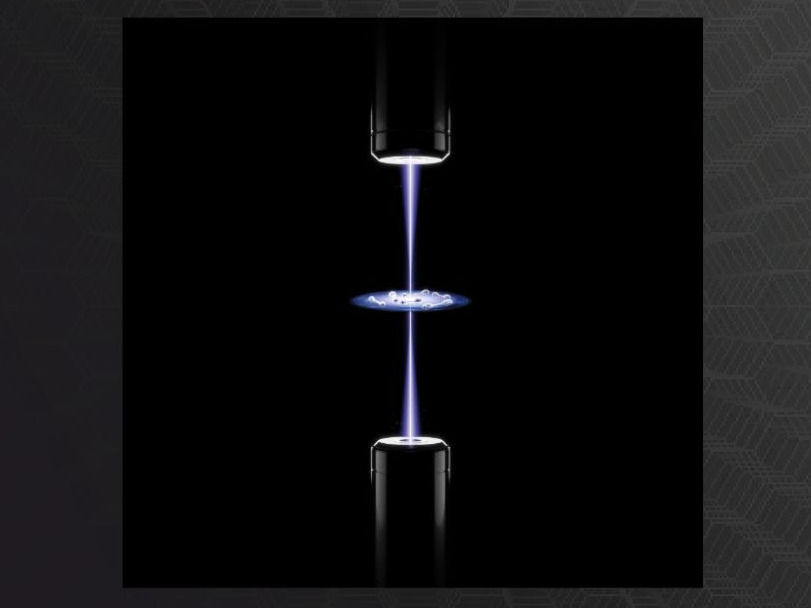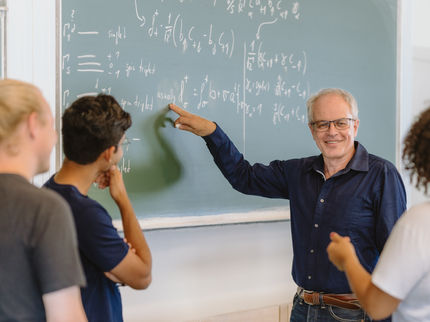Two, Six, Many
Phase transitions: Physicists observe the emergence of collective behaviour
phase transitions describe dramatic changes in properties of a macroscopic system – like the transition from a liquid to a gas. Starting from individual ultracold atoms, Heidelberg University physicists were able to observe the emergence of such a transition with an increasing number of particles. The research work was carried out in the field of quantum physics under the direction of Prof. Dr Selim Jochim from the Institute for Physics.

Artist impression: Six pairs of atoms in the focus of a laser beam.
Jonas Ahlstedt / Lund University Bioimaging Centre (LBIC)
In order to formulate effective theories in physics, microscopic details are set aside in favour of macroscopically observable quantities. A cup of water can be described by properties like pressure, temperature and density of the fluid, whereas the position and velocity of the individual water molecules are irrelevant. A phase transition describes the change of a macroscopic system from one state of matter, like fluid, to a different state of matter, like gaseous. The properties of macroscopic systems – so-called many-body systems – can be described as emergent because they result from the interaction of individual components which themselves do not possess these properties.
“I have long been interested in how this dramatic macroscopic change at a phase transition emerges from the microscopic description,” states Selim Jochim. To answer this question, the researchers designed an experiment in which they assembled a system from individual ultracold atoms. Using this quantum simulator, they investigated how collective behaviour arises in a microscopic system. To this end, they trapped up to twelve atoms in a tightly focused laser beam. In this artificial system it is possible to continuously tune the interaction strength between the atoms from non-interacting to being the largest energy scale in the system. “On the one hand, the number of particles in the system is small enough to describe the system microscopically. On the other hand, collective effects are already evident,” explains Luca Bayha, a postdoc in Prof. Jochim’s team.
In their experiment, the Heidelberg physicists configured the quantum simulator such that the atoms attract one another, and if the attraction is strong enough, form pairs. These pairs of atoms are the necessary ingredient for a phase transition to a superfluid – a state in which the particles flow without friction. The current experiments focused on when the pair formation emerges as a function of the interaction strength and the particle number. “The surprising result of our experiment is that only six atoms show all the signatures of a phase transition expected for a many-particle system,” adds Marvin Holten, a doctoral student in Prof. Jochim’s group.
Original publication
Other news from the department science

Get the chemical industry in your inbox
By submitting this form you agree that LUMITOS AG will send you the newsletter(s) selected above by email. Your data will not be passed on to third parties. Your data will be stored and processed in accordance with our data protection regulations. LUMITOS may contact you by email for the purpose of advertising or market and opinion surveys. You can revoke your consent at any time without giving reasons to LUMITOS AG, Ernst-Augustin-Str. 2, 12489 Berlin, Germany or by e-mail at revoke@lumitos.com with effect for the future. In addition, each email contains a link to unsubscribe from the corresponding newsletter.

























































